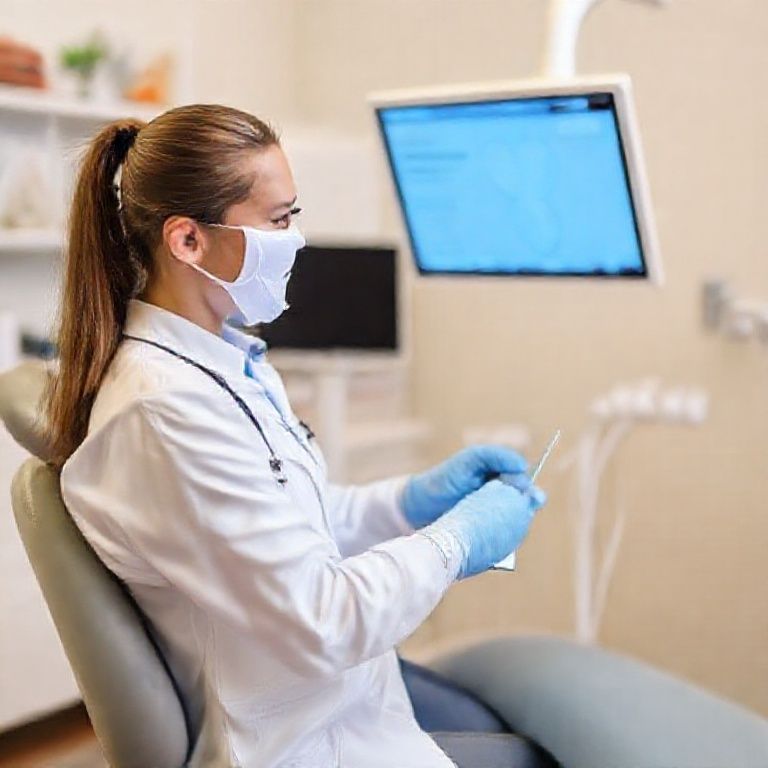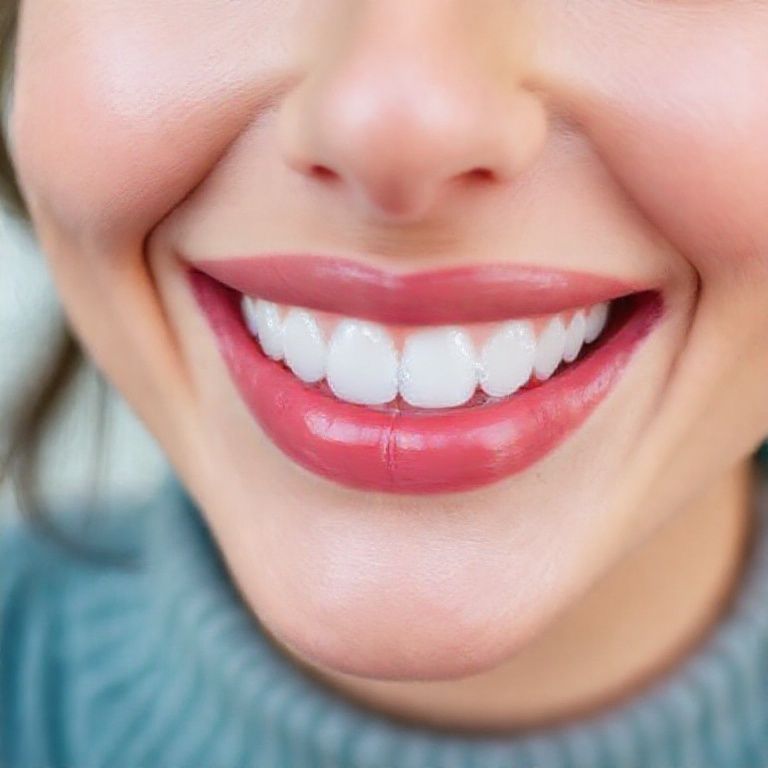The Complete Guide to Free Dental Treatment for Diabetics: Navigating Rights, Resources, and Oral Health
Imagine a chronic condition that not only demands constant vigilance over blood sugar levels but also wages a silent, insidious war within your mouth. This is the reality for millions of individuals living with diabetes. While the focus often remains on the heart, kidneys, and eyes, the oral cavity can be the first and most dramatic stage where the complications of diabetes manifest. From tender, bleeding gums to persistent bad breath and a disconcerting looseness of the teeth, the impact is both physically uncomfortable and psychologically distressing. For many, a crucial question arises amidst the management of this complex condition: given this heightened risk, does the healthcare system provide support? Specifically, do diabetics get free dental treatment?
The answer, as with many aspects of healthcare policy, is not a simple “yes” or “no.” It is a nuanced landscape of eligibility criteria, means-testing, and specific circumstances. This article serves as a definitive guide, a comprehensive map to navigate this complex terrain. We will dissect the biological reasons why diabetes makes exemplary dental care non-negotiable. We will delve deep into the structures of the National Health Service (NHS) in the UK, unravelling the rules around free dental treatment and identifying exactly who qualifies. We will explore the critical intersection of diabetes with universal credit and other low-income benefits, and illuminate alternative pathways to affordable care through dental schools, charities, and community programmes. Our mission is to empower you with knowledge, transforming confusion into clarity and inaction into proactive health management. Your smile is worth protecting; let’s explore how to ensure it receives the care it deserves, without imposing an insurmountable financial burden.
2. The Biolo

gical Nexus: Understanding the Diabetes-Oral Health Connection
To fully appreciate the imperative for accessible dental care for diabetics, one must first understand the profound physiological interplay between blood glucose levels and oral health. The mouth is not an isolated system; it is a gateway, and its condition is a reflection of the body’s overall health. For a person with diabetes, this connection is particularly potent and perilous.
2.1. The Sugar Gateway: Hyperglycemia and Its Direct Impact on Oral Flora
The human mouth is home to billions of bacteria, most of which coexist peacefully. However, this ecosystem is highly sensitive to its environment. Saliva naturally contains glucose, but in individuals with uncontrolled diabetes (hyperglycemia), the glucose concentration in saliva can rise significantly. This creates a veritable feast for harmful, acid-producing bacteria.
Think of it as leaving out a banquet for the very microbes that cause tooth decay and gum disease. These bacteria consume the excess sugars and excrete acids that erode tooth enamel, leading to cavities. Furthermore, they form a sticky, colourless film known as plaque. If plaque is not removed regularly through brushing and flossing, it hardens into tartar (calculus), which further irritates the gums and provides a robust fortress for bacteria to thrive. This is the foundational event that sets the stage for more severe complications.
2.2. A Weakened Defense: How Diabetes Compromises the Immune System in the Mouth
Diabetes doesn’t just feed the enemy; it also disarms the body’s defences. One of the most damaging effects of prolonged hyperglycemia is its impact on the immune system. It impairs the function of white blood cells, which are the body’s primary soldiers against infection. In the context of the mouth, this means that the body’s ability to combat the bacterial onslaught from plaque is significantly diminished.
Simultaneously, diabetes can damage the small blood vessels throughout the body, a condition known as microangiopathy. In the gums, this reduces blood flow, oxygen delivery, and the efficiency of nutrient transport and waste removal. This dual assault—a weakened immune response and compromised circulatory support—makes the gum tissue highly vulnerable to infection and slows its ability to heal. A minor gum irritation that would be swiftly dealt with in a healthy individual can rapidly escalate into a severe, persistent infection for a person with poorly controlled diabetes.
2.3. The Vicious Cycle: Periodontal Disease as a Contributor to Insulin Resistance
The relationship between diabetes and oral health is not a one-way street; it is a dangerous, self-perpetuating cycle. While diabetes increases the risk of periodontal (gum) disease, severe periodontal disease can, in turn, worsen diabetic control.
Periodontal disease is a chronic inflammatory condition. As the infection in the gums persists, the body mounts a systemic inflammatory response, releasing pro-inflammatory cytokines (such as Tumour Necrosis Factor-alpha) into the bloodstream. These inflammatory chemicals can interfere with the action of insulin, the hormone responsible for ushering glucose into cells. This interference, known as insulin resistance, means the body requires more insulin to achieve the same effect, making blood sugar levels more difficult to control.
Therefore, a person with diabetes who develops periodontal disease may find their HbA1c levels (a measure of long-term blood glucose control) creeping upward. Effectively treating the periodontal disease through professional cleaning and improved oral hygiene can reduce this systemic inflammation, thereby improving insulin sensitivity and aiding in diabetes management. This establishes dental care not as a separate, isolated health concern, but as an integral component of comprehensive diabetes care.
3. The Central Question: Do Diabetics Automatically Qualify for Free Dental Care?
This brings us to the core of the matter. Given this well-established, two-way relationship between diabetes and oral disease, it would seem a logical and necessary public health measure to provide automatic, free dental care to all individuals diagnosed with diabetes. However, in the context of the NHS in the United Kingdom, the diagnosis of diabetes alone does not automatically entitle an individual to free dental treatment.
The NHS operates on a system of specific exemption criteria for dental charges. These criteria are primarily based on age, pregnancy/maternity, and whether an individual is in receipt of certain means-tested benefits. The medical condition itself, with a few very specific exceptions (which do not currently include diabetes), is not a direct pathway to free care.
This often comes as a shock and a source of frustration to many diabetics who are acutely aware of their increased dental risks. The policy can appear to be a disconnect between medical evidence and healthcare funding. The rationale from a policy perspective is that the NHS dental charging system is designed to target financial support towards those on the lowest incomes, rather than creating exemptions based on specific medical diagnoses, of which there are many that could impact oral health.
Therefore, a person with diabetes must fall into one of the other exemption categories to receive free NHS dental care. The most common pathways are being under 18, over 18 but in full-time education and under 19, being pregnant or having had a baby in the last 12 months, or being an in-patient where the dentist is part of the hospital team. For most adults, the relevant pathway is through the benefits system or the NHS Low Income Scheme.
4. Deconstructing the NHS Dental System: A Tiered Approach to Costs and Exemptions
To effectively navigate the system, one must understand its structure. NHS dental care is not free for all adults in the UK; it is subsidised, with patients contributing towards the cost through a fixed charge system.
4.1. The NHS Dental Charge Bands: What Treatment Actually Costs
NHS dental treatments are grouped into three bands. The charge is for the entire course of treatment, not per procedure, meaning you only pay once per treatment episode, regardless of how many visits it takes.
-
Band 1: £25.80 – This covers an examination, diagnosis (including X-rays), advice on preventing future problems, a scale and polish if clinically needed, and application of fluoride varnish or fissure sealant.
-
Band 2: £70.70 – This includes everything in Band 1, plus any further treatment such as fillings, root canal work, and extractions.
-
Band 3: £306.80 – This includes everything in Bands 1 and 2, plus more complex procedures like crowns, dentures, bridges, and other laboratory-work.
It is crucial to note that if you are referred to a secondary care specialist (e.g., a hospital for oral surgery), different charging rules may apply, though often these treatments are provided free of charge.
4.2. The Crucial List: Who is Automatically Entitled to Free NHS Dental Care?
The following groups are automatically eligible for free NHS dental treatment in England (rules are similar but should be verified for Scotland, Wales, and Northern Ireland):
-
Anyone under the age of 18.
-
Anyone under 19 and in full-time education.
-
Pregnant women, and those who have given birth in the previous 12 months.
-
Patients being treated in an NHS hospital, where the dental treatment is carried out by the hospital dentist.
-
Individuals or their partners receiving Income Support.
-
Individuals or their partners receiving Income-based Jobseeker’s Allowance.
-
Individuals or their partners receiving Income-related Employment and Support Allowance (ESA).
-
Individuals or their partners receiving Universal Credit (and meet specific earnings criteria).
-
Individuals entitled to, or named on, a valid NHS tax credit exemption certificate.
-
Individuals named on a valid HC2 certificate (full help) through the NHS Low Income Scheme.
As is evident, diabetes is not listed. The pathway for a diabetic adult, therefore, typically leads to the benefits system or the Low Income Scheme.
5. The Diabetes and Universal Credit Overlap: Navigating the Low-Income Pathway
For many adults with diabetes, the financial strain can be significant. The condition can impact the ability to work, and the costs of management (healthy food, monitoring equipment, etc.) can be high. This is where the link to the benefits system becomes the most probable route to free dental care.
5.1. Understanding Qualifying Benefits: The Key to Free Treatment
If you receive certain benefits, you and your partner are automatically entitled to free NHS dental care, prescriptions, and sight tests. The key benefits are:
-
Income Support
-
Income-based Jobseeker’s Allowance
-
Income-related Employment and Support Allowance (ESA)
-
Universal Credit: This is the most common modern benefit, but it’s important to understand the nuance. You are eligible for free dental care if, in your last Universal Credit assessment period, your earnings were £435 or less, or £935 or less if your Universal Credit includes an element for a child or you have limited capability for work.
If you qualify under one of these benefits, you should indicate this when booking and attending your dental appointment. You may be asked to provide evidence, such as an award notice.
5.2. The NHS Low Income Scheme (LIS): A Lifeline for Those Not on Benefits
What if you have diabetes, have a low income, but do not receive one of the qualifying benefits? This is where the NHS Low Income Scheme (LIS) becomes vital. The LIS is designed to help people on a low income who are not automatically exempt from charges.
The process involves filling out form HC1, a detailed application that assesses your income and capital (savings, investments, etc.) against your outgoings. Based on this assessment, you will be issued one of two certificates:
-
HC2 Certificate (Full Help): This entitles you to full help with NHS costs, including free dental treatment, free prescriptions, free sight tests, and help towards the cost of glasses.
-
HC3 Certificate (Partial Help): This certificate will state the amount you need to contribute towards your NHS costs. For example, if you have a dental treatment bill of £70.70 (Band 2) and your HC3 certificate states you must contribute £30, you would only pay £30.
The HC1 form can be obtained from Jobcentre Plus offices, most NHS hospitals, and by calling the NHS helpline. It is a critical tool for diabetics on low incomes who do not qualify for automatic exemptions.
6. Beyond the NHS: Alternative Avenues for Free and Low-Cost Dental Care
If you do not qualify for free NHS dental care and find the standard charges prohibitive, there are other avenues to explore. These options can provide high-quality care at a reduced cost or, in some cases, for free.
6.1. Dental Schools: Expert Care at a Fraction of the Cost
Dental schools attached to universities are an excellent resource. Treatment is provided by final-year dental students who are closely supervised by qualified, experienced dentists. The procedures are thorough as they are part of the students’ training and assessment. The cost is typically significantly lower than private practice and often lower than NHS charges. The main trade-off is time, as appointments can be longer. To access this, you typically need to contact the dental school directly to register as a patient.
6.2. Charitable Organisations and Dental Missions: Bridging the Gap
Several charities in the UK provide dental care for vulnerable groups, which can include people on low incomes with chronic health conditions like diabetes.
-
Dentaid: A charity that works to improve access to dental care by running mobile clinics and supporting community dental projects across the country.
-
The Cinnamon Trust: While primarily for the elderly and their pets, they can sometimes assist with finding affordable dental care.
-
Local Missions and Homeless Shelters: Many cities have charitable dental clinics or missions that offer free or low-cost care to those in need. A local search or enquiry with Citizens Advice can help locate these services.
6.3. Community Health Centres and Sliding Scale Clinics
Some community health centres offer dental services on a sliding fee scale based on income. These are not as widespread as NHS practices, but they represent a crucial part of the safety net. Your local Clinical Commissioning Group (CCG) or Integrated Care System (ICS) should have information on such services in your area.
7. A Proactive Approach: Essential Dental Care Routines for Diabetics
While navigating the financial aspects of care is essential, the first line of defence is always a rigorous, proactive oral hygiene routine. For a diabetic, this is not just about avoiding cavities; it is a critical component of managing their overall health.
7.1. The Diabetic-Friendly Oral Hygiene Protocol
-
Brushing: Brush your teeth at least twice a day with a fluoride toothpaste. Use a soft-bristled brush to avoid damaging sensitive gums. Consider an electric toothbrush for more effective plaque removal.
-
Flossing: Floss daily to remove plaque and food particles from between the teeth, where a brush cannot reach. This is non-negotiable for preventing interdental gum disease.
-
Diet and Hydration: Control your sugar intake to starve the harmful oral bacteria. Drink plenty of water to help maintain saliva flow and rinse away food particles and bacteria.
-
Smoking Cessation: Smoking is a major risk factor for periodontal disease. For a diabetic, it dramatically accelerates the damage. Quitting is one of the most significant steps you can take for your oral and overall health.
-
Blood Glucose Control: This is the most important factor. Maintaining your blood sugar levels within your target range will directly reduce the amount of sugar in your saliva and improve your body’s ability to fight infection.
7.2. The Critical Role of Professional Cleanings and Regular Check-ups
Even with perfect home care, professional cleanings (scale and polish) are essential. A dental hygienist can remove hardened tartar (calculus) that you cannot remove yourself. For diabetics, more frequent check-ups and cleanings—perhaps every three to six months instead of the standard six to twelve—are often recommended. Discuss the ideal frequency with your dentist based on your individual risk assessment.
7.3. Communicating with Your Dentist and Doctor: A Collaborative Health Strategy
Ensure your dentist knows you have diabetes and is aware of your most recent HbA1c results. Likewise, inform your doctor or diabetic nurse about any dental problems you are experiencing, especially signs of gum disease like bleeding, swelling, or loose teeth. This collaborative approach ensures all your healthcare providers are working with the same information to manage your health holistically.
8. Case Studies: Real-World Scenarios of Diabetics Accessing Dental Care
To illustrate the pathways discussed, consider these hypothetical but realistic scenarios:
-
Case Study 1: Sarah, a 45-year-old with Type 2 Diabetes.
Sarah works part-time and receives Universal Credit. In her last assessment period, she earned £400. Because her earnings are below the £435 threshold, she is automatically entitled to free NHS dental treatment. She simply informs her dental practice of this and shows her Universal Credit statement as proof. -
Case Study 2: David, a 58-year-old with Type 1 Diabetes.
David is retired early due to other health complications. His income comes from a small private pension that disqualifies him from Universal Credit, but it is very low. He applies for the NHS Low Income Scheme using the HC1 form. After assessment, he is granted an HC2 certificate for full help, meaning he receives all his dental care for free. -
Case Study 3: Aisha, a 35-year-old with Gestational Diabetes.
Aisha is pregnant. Regardless of her income or benefit status, she is automatically entitled to free NHS dental treatment throughout her pregnancy and for 12 months after the birth of her child. -
Case Study 4: Mark, a 50-year-old with well-controlled Type 2 Diabetes.
Mark works full-time and has a moderate income. He does not qualify for any benefits or the Low Income Scheme. He is responsible for paying the standard NHS dental charges. To manage costs, he attends a local dental school for his check-ups and cleanings, paying a reduced fee, while maintaining an excellent at-home oral care routine to minimise the need for more expensive treatments.
9. Conclusion: Summarizing the Content of the Article in Three Lines
While a diabetes diagnosis does not grant automatic entitlement to free dental care in the UK, the heightened oral health risks make accessing regular treatment imperative. Eligibility for free NHS treatment is primarily determined by age, pregnancy, or receipt of specific low-income benefits, with the NHS Low Income Scheme providing a crucial pathway for those who fall outside automatic criteria. Proactively exploring all available options—from benefit-linked exemptions and the LIS to dental schools and charitable services—is essential for managing both oral and systemic diabetic health effectively.
10. Frequently Asked Questions (FAQs)
Q1: If my diabetes causes a serious dental infection, will the treatment be free?
A: Urgent and emergency dental treatment is not automatically free. You will still be charged under the relevant NHS band (usually Band 1 for emergency treatment like pain relief or a temporary filling, or Band 2 if an extraction is needed). Your eligibility for free care is still based on the exemption criteria discussed (benefits, Low Income Scheme, etc.), not the urgency of the condition.
Q2: I am a diabetic and receive PIP (Personal Independence Payment). Does this qualify me for free dental care?
A: No. PIP is a non-means-tested benefit designed to help with the extra costs of a long-term health condition. It is not one of the qualifying benefits for free NHS dental treatment. Your eligibility would depend on your income and whether you also receive a qualifying means-tested benefit like Universal Credit (meeting the earnings criteria) or qualify through the Low Income Scheme.
Q3: How often should I see my dentist if I have diabetes?
A: There is no one-size-fits-all answer, but the general recommendation is at least every six months. However, your dentist may recommend more frequent visits (e.g., every 3-4 months) if you have a history of gum disease or have difficulty controlling your blood sugar levels. This should be determined by a personalised risk assessment with your dental professional.
Q4: What is the single most important thing I can do for my oral health as a diabetic?
A: The most impactful action is to maintain good blood glucose control. This reduces the sugar available to bacteria in your mouth and strengthens your body’s immune defences against infection. Coupled with consistent, thorough brushing and flossing, this is your best defence against dental complications.
Q5: Where can I get an HC1 form for the Low Income Scheme?
A: You can order an HC1 form online via the NHS website, pick one up from a Jobcentre Plus office, or request one by calling the NHS helpline. Some pharmacies and GP surgeries may also have them available.
11. Additional Resources
-
NHS UK – Health Costs: The official government website for information on NHS charges and exemptions. https://www.nhs.uk/health-costs/
-
Diabetes UK – Oral Health: A dedicated section from the leading UK charity for diabetes, providing specific advice on oral care. https://www.diabetes.org.uk/guide-to-diabetes/life-with-diabetes/oral-health
-
Citizens Advice: Provides free, confidential, and impartial advice on benefits, debt, and legal issues, and can help you understand your eligibility for support. https://www.citizensadvice.org.uk/
-
British Dental Association (BDA): The professional association for dentists in the UK, with a patient-focused section on finding an NHS dentist and understanding your rights. https://bda.org/advice/Pages/Patients.aspx
-
Dentaid: The website for the dental charity, providing information on their mobile clinics and outreach programmes. https://www.dentaid.org/
Date: October 10, 2025
Author: The Public Health Policy Institute
Disclaimer: The information contained in this article is for educational and informational purposes only and does not constitute professional medical, legal, or financial advice. While we strive to provide accurate and up-to-date information, eligibility criteria and benefit programs are subject to change. Readers are strongly advised to consult with relevant healthcare providers, government agencies, and benefits administrators to verify their specific eligibility and available options.


